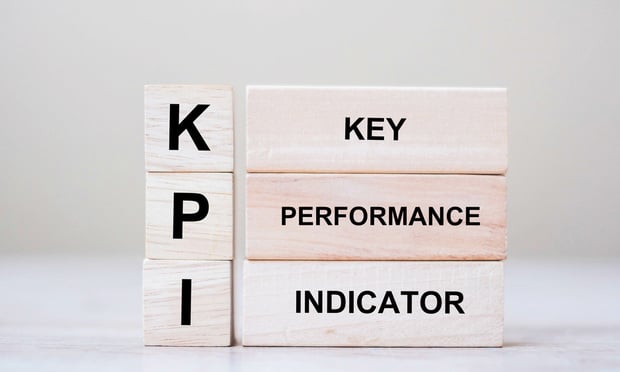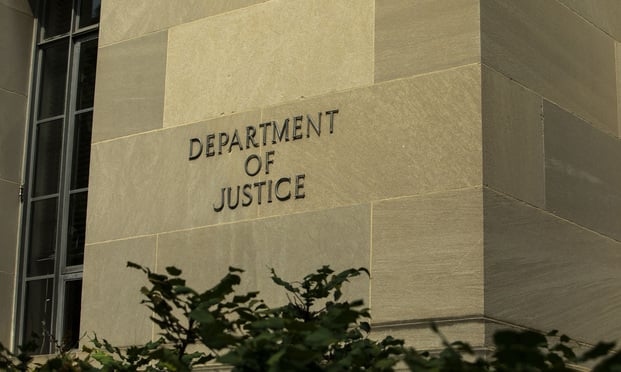Features

Leveraging Law Firm KPIs for Business Success
Utilizing Key Performance Indicators (KPIs) in a law firm is crucial for evaluating performance, profitability, client satisfaction, and overall success. Understanding which attorneys are the most profitable, which matters are the most lucrative, and the cost of acquiring new clients is crucial for making informed business decisions.
Features

Staying Nimble and Embracing Values Are Essential for Mid-Size Law Firms' Survival
In the ever-evolving legal landscape, mid-size law firms find themselves at a critical juncture. Seismic shifts, accelerated by the pandemic, have reshaped the very fabric of our industry. Now, more than ever, agility, innovation, and a steadfast commitment to meeting client needs are not just desirable traits, but essential for business survival.
Features

5 Ways AI Can Strengthen Revenue Generation and Client Relationships
Maintaining consistent communication with clients can be time-consuming for most law firm professionals. Balancing this task with other competing responsibilities becomes challenging when case management, administrative duties, and strategic planning also demand the lawyer's attention. The time has never been better for firms to start introducing technology, like AI, to improve their overall business.
Features

CLE Shouldn't Be the Only Training Mandatory for Attorneys
State law bar associations mandate Continuing Legal Education (CLE) for attorneys to ensure that legal professionals remain informed of the evolving laws and to maintain a high standard of professional competence. Unfortunately, "how to be successful" is not taught in law school nor approved as a CLE topic.
Features

Diversity Gains Continued, But Slowed, In 2023
Results from American Lawyer's Diversity Scorecard The pace of growth slowed for representation of diverse attorneys in 2023, but every underrepresented group still made gains.
Features

DOJ's Cyber Fraud Initiative Is a Wake-Up Call That Keeps Ringing
The DOJ's Cyber-Fraud Initiative's results and DOJ's guidance on corporate compliance have made the point to government contractors and corporate America — "now is the time to invest and reinvest" in cybersecurity compliance.
Features

The Legal Help Desk: Shifting Toward User Sentiment as the Primary Health Factor
Traditional metrics that once defined the effectiveness of help desk operations within law firms are undergoing a profound transformation. The new era places user sentiment and new delivery models at the forefront of service as a quicker "get back to work" mentality coupled with a technology-savvy generational shift. As a result, the gauges we use to measure customer satisfaction have changed and are shaping the overall future success of the legal tech support ecosystem.
Features

The Perfect Storm: Why Contract Hiring Will Eclipse Direct Hiring In Privacy and Tech In 2024
Part Two of a Two Part Article Part 1 of this article looked at how remote flexibility is driving job seekers, that most privacy programs will use contractors by 2026, the speed of hire, the real cost of DIY staffing and whether posting jobs online really works. Part 2 looks at what's next for CPOs, AI jobs in privacy, where the new jobs will come from, whose salaries are spiking and some guidance for the latter half of 2024.
Features

Six Reasons e-Discovery Benefits from AI
Recent media coverage makes it clear that the time for law firms to embrace the disruption of AI is now. If you wait, from the looks of it, you risk losing business, and perhaps credibility.
Features

CLE Shouldn't Be the Only Mandatory Training for Attorneys
Each stage of an attorney's career offers opportunities for a curriculum that addresses both the individual's and the firm's need to drive success.
Need Help?
- Prefer an IP authenticated environment? Request a transition or call 800-756-8993.
- Need other assistance? email Customer Service or call 1-877-256-2472.
MOST POPULAR STORIES
- The 'Sophisticated Insured' DefenseA majority of courts consider the <i>contra proferentem</i> doctrine to be a pillar of insurance law. The doctrine requires ambiguous terms in an insurance policy to be construed against the insurer and in favor of coverage for the insured. A prominent rationale behind the doctrine is that insurance policies are usually standard-form contracts drafted entirely by insurers.Read More ›
- The Brave New World of Cybersecurity Due Diligence in Mergers and Acquisitions: Pitfalls and OpportunitiesLike poorly-behaved school children, new technologies and intellectual property (IP) are increasingly disrupting the M&A establishment. Cybersecurity has become the latest disruptive newcomer to the M&A party.Read More ›
- A Lawyer's System for Active ReadingActive reading comprises many daily tasks lawyers engage in, including highlighting, annotating, note taking, comparing and searching texts. It demands more than flipping or turning pages.Read More ›
- Abandoned and Unused Cables: A Hidden Liability Under the 2002 National Electric CodeIn an effort to minimize the release of toxic gasses from cables in the event of fire, the 2002 version of the National Electric Code ("NEC"), promulgated by the National Fire Protection Association, sets forth new guidelines requiring that abandoned cables must be removed from buildings unless they are located in metal raceways or tagged "For Future Use." While the NEC is not, in itself, binding law, most jurisdictions in the United States adopt the NEC by reference in their state or local building and fire codes. Thus, noncompliance with the recent NEC guidelines will likely mean that a building is in violation of a building or fire code. If so, the building owner may also be in breach of agreements with tenants and lenders and may be jeopardizing its fire insurance coverage. Even in jurisdictions where the 2002 NEC has not been adopted, it may be argued that the guidelines represent the standard of reasonable care and could result in tort liability for the landlord if toxic gasses from abandoned cables are emitted in a fire. With these potential liabilities in mind, this article discusses: 1) how to address the abandoned wires and cables currently located within the risers, ceilings and other areas of properties, and 2) additional considerations in the placement and removal of telecommunications cables going forward.Read More ›
- Guidance on Distributions As 'Disbursements' and U.S. Trustee FeesIn a recent case from the Bankruptcy Court for the District of Delaware, In re Paragon Offshore PLC, the bankruptcy court provided guidance on whether a post-plan effective date litigation trust's distributions constituted disbursements subject to the U.S. Trustee fee "tax."Read More ›
